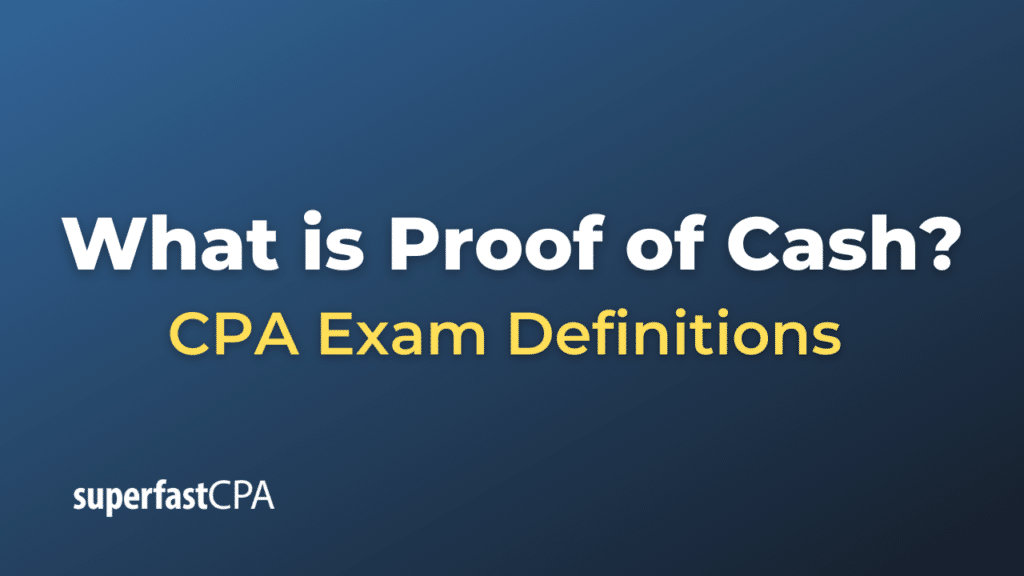Proof of Cash
Proof of Cash, also known as a bank reconciliation, is an audit procedure used to verify the accuracy of a company’s cash records. This process involves comparing the company’s internal records of cash transactions (as per the cash book) to the bank’s records of the company’s account (as per the bank statement).
The purpose of a proof of cash is to identify any discrepancies between the two sets of records. These discrepancies could be due to timing differences (like outstanding checks that have not yet cleared), errors, or fraud.
Typically, a proof of cash includes four major steps:
- Receipts reconciliation: Comparing the deposits in transit (deposits recorded by the company but not yet by the bank) and the amount of cash received as per the company’s books to the bank’s records.
- Disbursements reconciliation: Comparing the outstanding checks (checks written by the company but not yet cleared by the bank) and the amount of cash disbursed as per the company’s books to the bank’s records.
- Reconciliation of bank credits: Verifying the accuracy of bank credits, such as interest income and notes collected by the bank.
- Reconciliation of bank debits: Verifying the accuracy of bank debits, such as service charges and automatic payments.
By carrying out a proof of cash, a company can ensure that its cash records are accurate, which is crucial for financial reporting and decision-making purposes. It can also help detect any irregularities or fraudulent activities early.
Example of Proof of Cash
Let’s consider a simple example of a proof of cash (bank reconciliation).
Let’s say a business, ABC Corp, has the following data for the month of July:
- The company’s cash ledger shows a balance of $8,000 at the end of July.
- The bank statement shows a balance of $9,500 at the end of July.
At first glance, it appears that there is a discrepancy of $1,500. However, ABC Corp remembers that there are some outstanding transactions that have not yet been processed by the bank:
- There are outstanding checks (checks issued by ABC Corp but not yet presented to the bank for payment) totaling $2,000.
- There are deposits in transit (deposits made by ABC Corp but not yet recorded by the bank) totaling $500.
ABC Corp would then perform a bank reconciliation as follows:
- Start with the bank’s balance: $9,500
- Subtract any outstanding checks: $9,500 – $2,000 = $7,500
- Add any deposits in transit: $7,500 + $500 = $8,000
The adjusted bank balance is now $8,000, which matches the company’s cash ledger. The proof of cash process therefore confirms that ABC Corp’s cash records are accurate.
Keep in mind that this is a simple example. In reality, a company might have many more transactions to consider, and the reconciliation process could be much more complex. Furthermore, any discrepancies that cannot be accounted for might require further investigation to rule out errors or fraud.













